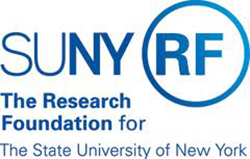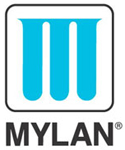 When assessing the validity of a patent, you cannot ignore the dependent claims. That was the main takeaway from the recent Federal Circuit case, Research Foundation of State University of New York v. Mylan Pharmaceuticals Inc. In that case, the lower court had invalidated all of the asserted claims of two particular patents as inherently anticipated in view of several prior art references. However, three of these claims were dependent claims, and they all had the same additional limitation -- "wherein the tetracycline compound has substantially no anti-microbial activity in said mammal system." The lower court did not address this limitation, so the Federal Circuit vacated the finding of invalidity of these three claims and remanded for a determination whether the identified prior art references also contained this limitation. The Court did not, however, fault the lower court for overlooking this limitation, but instead placed the blame squarely on the patent-asserting parties for failing to highlight this issue in the post-trial papers. The result was somewhat academic, in part because the Plaintiffs also asserted a later-expiring patent that had been found by the lower court to be valid and infringed by Mylan. The Federal Circuit affirmed the remainder of the lower court's findings, with the result being that the FDA will not be able to approve Mylan's ANDA until the expiration of the infringed patent, which currently will occur on December 19, 2027.
When assessing the validity of a patent, you cannot ignore the dependent claims. That was the main takeaway from the recent Federal Circuit case, Research Foundation of State University of New York v. Mylan Pharmaceuticals Inc. In that case, the lower court had invalidated all of the asserted claims of two particular patents as inherently anticipated in view of several prior art references. However, three of these claims were dependent claims, and they all had the same additional limitation -- "wherein the tetracycline compound has substantially no anti-microbial activity in said mammal system." The lower court did not address this limitation, so the Federal Circuit vacated the finding of invalidity of these three claims and remanded for a determination whether the identified prior art references also contained this limitation. The Court did not, however, fault the lower court for overlooking this limitation, but instead placed the blame squarely on the patent-asserting parties for failing to highlight this issue in the post-trial papers. The result was somewhat academic, in part because the Plaintiffs also asserted a later-expiring patent that had been found by the lower court to be valid and infringed by Mylan. The Federal Circuit affirmed the remainder of the lower court's findings, with the result being that the FDA will not be able to approve Mylan's ANDA until the expiration of the infringed patent, which currently will occur on December 19, 2027.
The Federal Circuit opinion did not contain much more detail than the above paragraph. In fact, without that one issue, this case most likely would have been a Rule 36 affirmance. Therefore, for the benefit of the readers of this blog, we will provide some context for this case. The drug at issue is doxycycline, which is sold by Galderma Laboratories, L.P. under the brand name Oracea® for the treatment of acne rosacea. There were five patents that cover Oracea® that were asserted in this case: the "Ashley Patents," U.S. Patent Nos. 7,211,267 and 7,232,572; the "Amin Patents," U.S. Patent Nos. 5,789,395 and 5,919,775; and the "Chang Patent," U.S. Patent No. 7,749,532.
 In October 2008, Mylan submitted ANDA No. 90-855 to market a generic version of this drug. Because doxycycline was an old antibiotic, it was not entitled to most of the benefits of the Hatch-Waxman scheme at the time of this ANDA filing. However, Congress subsequently revised the statute, paving the way for the Orange Book listing of the Ashley and Amin patents. Nevertheless, the FDA made a determination that these "later-listed" antibiotic patents were not entitled to a 30-month stay. Because the stay was not available, Galderma requested a preliminary injunction, which the United States District Court for the District of Delaware granted on June 28, 2010. The FDA then approved Mylan's product on July 1, and the Chang patent issued on July 6, 2010. In an effort to invalidate the Chang patent, Mylan filed a declaratory judgment action, and the two cases were subsequently combined.
In October 2008, Mylan submitted ANDA No. 90-855 to market a generic version of this drug. Because doxycycline was an old antibiotic, it was not entitled to most of the benefits of the Hatch-Waxman scheme at the time of this ANDA filing. However, Congress subsequently revised the statute, paving the way for the Orange Book listing of the Ashley and Amin patents. Nevertheless, the FDA made a determination that these "later-listed" antibiotic patents were not entitled to a 30-month stay. Because the stay was not available, Galderma requested a preliminary injunction, which the United States District Court for the District of Delaware granted on June 28, 2010. The FDA then approved Mylan's product on July 1, and the Chang patent issued on July 6, 2010. In an effort to invalidate the Chang patent, Mylan filed a declaratory judgment action, and the two cases were subsequently combined.
After a trial on the merits, the lower court found that the Ashley patents were not infringed by Mylan because Galderma failed to prove that Mylan's ANDA product contained an amount of doxycycline that does not significantly inhibit the growth of microorganisms. This outcome was based in part on the construction of two claim terms: "a sub-antibacterial amount," which was held to mean "an amount that does not significantly inhibit the growth of microorganisms, e.g., bacteria," and "an amount that . . . has substantially no antibiotic activity," which was held to mean "an amount that is effective to treat the papules and pustules of rosacea but does not significantly inhibit the growth of microorganisms, e.g., bacteria." The District Court also determined that the word "amount" applies to all parts of the human body. Therefore, the Court concluded, because there are approximately 100,000,00,000,000 bacterial cells in the human body, it would be almost impossible for Galderma to prove infringement of a claim that required no significant inhibition of any of these microorganisms. Moreover, Mylan had introduced in vivo studies that showed that the administration of its ANDA product significantly inhibited the growth of the bacteria in the oral cavity. As a result, the District Court held that the claims of the Ashley patents were not infringed. Mylan did not, however, prove that these same claims were invalid.
With respect to the Amin patents, which were the two patents that were the subject of the Federal Circuit opinion, the Court also found that Galderma failed to prove that the asserted claims were infringed. Galderma had failed to prove that Mylan's ANDA product would inhibit the production of endogenously produced Nitric Oxide ("NO"), or inhibit the expression of inducible Nitric Oxide synthase ("iNOS"). In addition to the non-infringement finding, the lower court found that the asserted claims were inherently anticipated by several prior art references. Claim 1 of the '395 patent was representative:
1. A method for inhibiting nitric oxide production in a mammal system, comprising providing to the mammalian system an amount of a tetracycline compound sufficient to cause a decrease in the amount of nitric oxide produced endogenously by the mammalian-system.
The cited art did not expressly teach that the prior art use of doxycycline inhibited NO production or iNOS expression, but the District Court found these to be inherent properties of these references. Half of these references taught the use of lower dosages of doxycycline, but the lower court only reviewed the higher dosage references to conclude that they all inherently anticipate all of the claimed methods. However, as indicated above, because the dependent limitation, which required that the compound also have no anti-microbial activity, was not addressed, the validity finding of these dependent claims was in error. The Federal Circuit stopped short of reversing this finding, but instead remanded for a determination of not only the teaching of the lower-dosage references, but an analysis of whether any of the references inherently disclosed the lack of anti-microbial activity.
Finally, the lower court did find that the later issued Chang patent was valid and infringed. However, because the Chang patent was not Orange Book listed, the District Court held a separate hearing regarding remedies on February 17, 2012. The Court subsequently granted a permanent injunction pursuant to 35 U.S.C. § 283 for many of the same reasons that it had previously granted the preliminary injunction. It also held that Galderma was entitled to relief under 35 U.S.C. § 271(e)(4)(A), which prevents the FDA from approving an ANDA product prior to the expiration of the patent at issue. Mylan had questioned whether such a remedy under this section was appropriate because the patent was not listed in the Orange Book. The District Court pointed out, however, that the Federal Circuit recently addressed the issue whether Section 271(e)(2) was available to non-Orange Book listed patents that cover an ANDA product, concluding that it is the filing of an ANDA that infringes a patent that provides jurisdiction, regardless of whether that patent is listed in the Orange Book. See AstraZeneca Pharmacetuticals LP v. Apotex Corp., 669 F.3d 1370 (Fed. Cir. 2012). By extension, the lower court held that the Hatch-Waxman remedy of Section 271(e)(4) is also be available to a patent holder, regardless of whether the patent at issue is Orange Book listed.
The final matter addressed by the lower court was the disposition of the bond that Galderma posted upon entry of the preliminary injunction. Mylan pointed out that the FDA approved its ANDA product on July 1, 2010, but the Chang patent did not issue until July 6, 2010. Therefore, Mylan contended, because the District Court found that Mylan's ANDA product did not infringe either the Ashley or Amin patents, it was entitled to be compensated for the time between these few days. The lower court disagreed, in part because Mylan had not presented its "winning" argument regarding the in vivo data until trial, and therefore to a certain extent was to blame for the harm it suffered.
In the end, the remand to determine the validity of the Amin patents was somewhat academic, in part because Mylan was found not to infringe the Amin patents anyway. However, Galderma and its co-plaintiffs have filed suit against several other ANDA filers seeking to market generic versions of this drug. Therefore, because it is possible that one or more of these ANDA products will be found to infringe the Amin patents, the validity of the dependent claim may turn out to be relevant after all.
Research Foundation of State University of New York v. Mylan Pharmaceuticals Inc. (Fed. Cir. 2013)
Nonprecedential disposition
Panel: Circuit Judges Newman, Reyna, and Taranto
Per curiam opinion